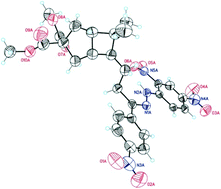Abstract
1,6-Enynes with electron-donating substituents at the

- This article is part of the themed collection: Organic & Biomolecular Chemistry 10th Anniversary
* Corresponding authors
a
Institute of Chemical Research of Catalonia (ICIQ), Av. Països Catalans 16, 43007 Tarragona, Spain
E-mail:
aechavarren@iciq.es
b Departament de Química, Universitat Autónoma, de Barcelona, 08193 Bellaterra, Spain
c Departament de Química Analítica i Química Orgànica, Universitat Rovira i Virgili, C/Marcelli Domingo s/n, 43007 Tarragona, Spain
1,6-Enynes with electron-donating substituents at the

 Please wait while we load your content...
Something went wrong. Try again?
Please wait while we load your content...
Something went wrong. Try again?
A. Escribano-Cuesta, P. Pérez-Galán, E. Herrero-Gómez, M. Sekine, A. A. C. Braga, F. Maseras and A. M. Echavarren, Org. Biomol. Chem., 2012, 10, 6105 DOI: 10.1039/C2OB25419K
To request permission to reproduce material from this article, please go to the Copyright Clearance Center request page.
If you are an author contributing to an RSC publication, you do not need to request permission provided correct acknowledgement is given.
If you are the author of this article, you do not need to request permission to reproduce figures and diagrams provided correct acknowledgement is given. If you want to reproduce the whole article in a third-party publication (excluding your thesis/dissertation for which permission is not required) please go to the Copyright Clearance Center request page.
Read more about how to correctly acknowledge RSC content.
 Fetching data from CrossRef.
Fetching data from CrossRef.
This may take some time to load.
Loading related content
